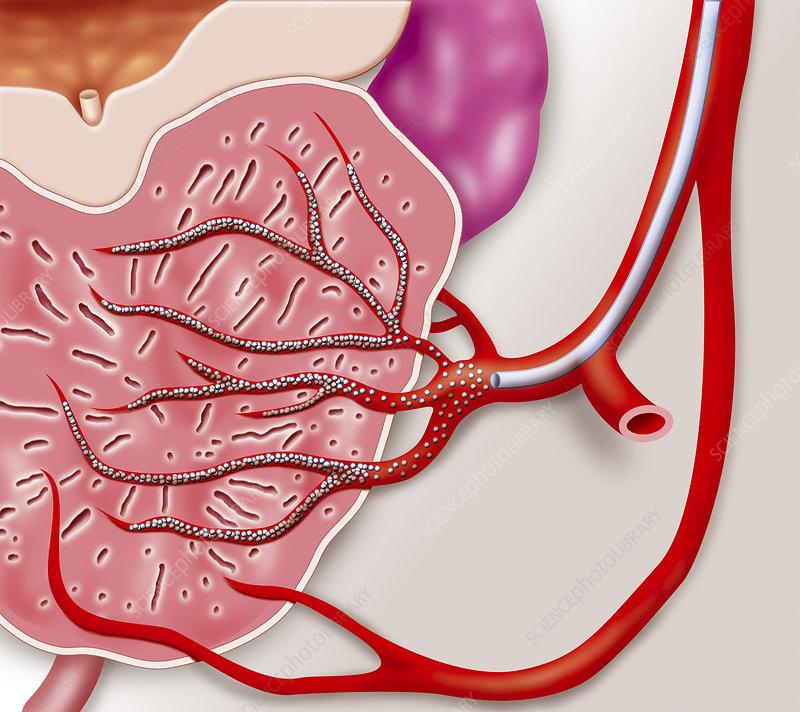Prostatic Artery Embolization: A Breakthrough Procedure for Enlarged Prostate Management
What is Prostatic Artery Embolization?
Prostatic artery embolization (PAE) is a minimally invasive procedure used to treat symptomatic enlarged prostate or benign prostatic hyperplasia (BPH). During the procedure, interventional radiologists access the prostatic arteries via catheterization of the femoral artery in the groin. Small gelatin or plastic particles are then injected into the prostatic arteries, which significantly reduces blood flow to the prostate gland and shrinks it by inducing controlled tissue death. This shrinkage of the prostate gland relieves symptoms of urinary obstruction caused by BPH, including difficulties in urination.
Benefits of PAE Over Existing Treatment Options
Traditionally, medications like alpha blockers and 5-alpha reductase inhibitors or surgical procedures like transurethral resection of the prostate (TURP) have been used to manage BPH symptoms. However, PAE offers several advantages over these existing treatment options:
- Lower Risk of Side Effects: PAE is associated with far fewer side effects like erectile dysfunction, retrograde ejaculation or incontinence compared to TURP surgery. medication regimens may also cause side effects like low libido, dizziness or fatigue.
- Quick Recovery: Patients recover faster after PAE and can resume regular daily activities within a few days. TURP requires general anesthesia and a week-long hospital stay for full recovery.
- Durable Results: Studies show symptom relief after PAE lasts for over 5 years in many patients, making it a one-time long-term solution in contrast to lifelong medication dependence.
- Preserves Sexual Function: By avoiding surgery near the prostate gland and bladder neck, PAE helps preserve normal sexual functions like ejaculation which may get affected after TURP.
- Cost-Effectiveness: In the long run, PAE proves more affordable for patients than repeated doctor visits and lifelong medications required to manage BPH symptoms medically.
How is a PAE Procedure Performed?
During Prostatic Artery Embolization, the patient is placed under conscious sedation. The groin area is cleaned and numbed with local anesthesia. Then a microcatheter is inserted through a small nick in the femoral artery and guided up into the prostatic arteries under fluoroscopic (X-ray) guidance. Microparticles ranging 20-1000 microns in size are injected selectively into the prostatic arteries until stasis is achieved, cutting off blood supply.
The catheter is then removed and pressure applied to the insertion site to stop any bleeding. The patient is monitored for a few hours and discharged the same day once stable. Follow-up visits assess response and any side effects. Improvement in urinary symptoms is seen within 3-6 months as the prostate tissue shrinks. The whole procedure takes under an hour in experienced hands.
Growing Adoption Among Urologists and Patients
Originally established as a viable treatment option in the 2010s, PAE has been increasingly adopted worldwide over the past decade. Over 150,000 such procedures have now been performed globally with success rates of 80-95% for symptom relief . PAE is covered by most insurance plans and Medicare/Medicaid in the US as an established treatment.
It has gained recognition from major urological bodies like American Urological Association as an effective alternative to surgery or medications for appropriately selected patients. More training programs are imparting skills to perform PAE safely. As awareness grows, demand is rising among both physicians seeking minimally invasive options and patients wanting to avoid side effects of other therapies. The number of interventional radiologists experienced in PAE has grown fourfold in the last 5 years .
Potential New Applications
Beyond standard use for enlarged prostate, research is also evaluating PAE's role in other urological disorders:
- Prostate Cancer: Some studies show it may help control local disease in men not eligible for surgery or radiation without unacceptable side effects .
- Post-Biopsy Bleeding: PAE successfully controlled hemorrhage in several refractory cases of bleeding after prostate biopsy, avoiding transfusion or surgery .
- Chronic Pelvic Pain: Initial reports indicate it may provide relief from pain caused by conditions like prostatitis through its action on pelvic blood supply .
- Downsizing Very Large Prostate Glands: It is being assessed as an option prior to TURP in men with prostate over 100g, making surgery safer and easier .
With promising early results, PAE can potentially transform the management of multiple urological conditions if ongoing trials provide more conclusive evidence of benefits versus existing therapies.
Get more insights on Prostatic Artery Embolization
